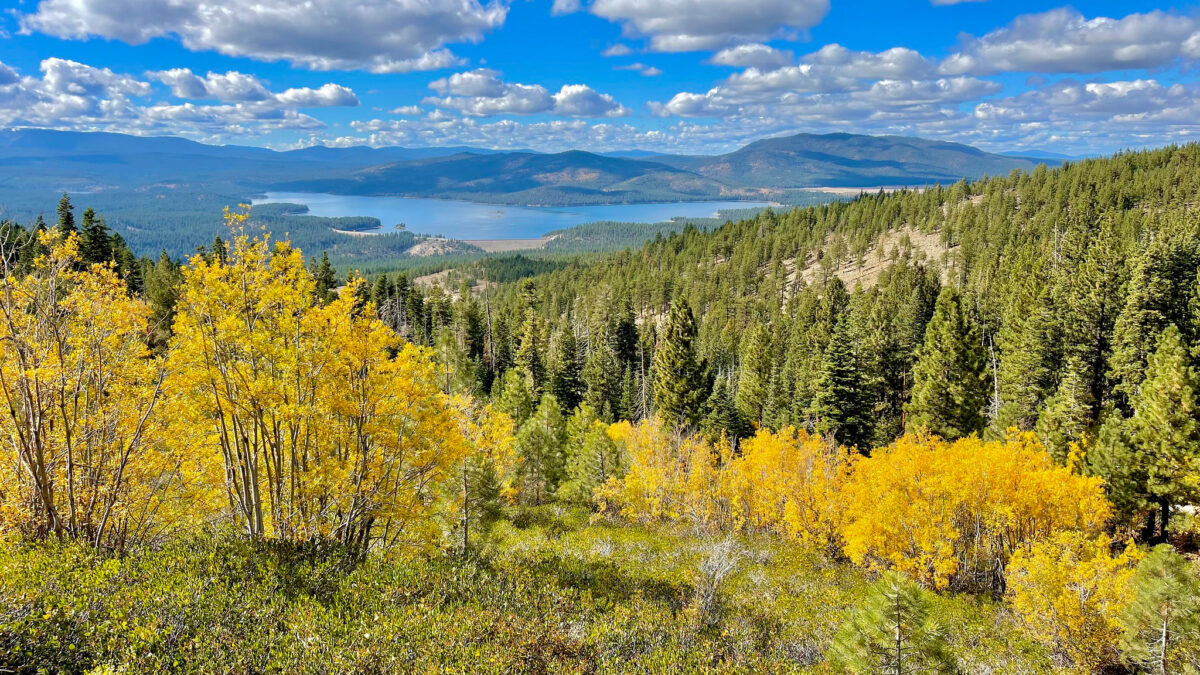Research & Developments is a blog for brief updates that provide context for the flurry of news regarding law and policy changes that impact science and scientists today.
The U.S. Department of Agriculture (USDA) is proposing rescinding the 2001 Roadless Area Conservation Rule, which protects about 45 million acres (182,000 square kilometers) of National Forest System lands from road construction, reconstruction, and timber harvests.
Of the land that would be affected by the rescission, more than 95% is in 10 western states: Alaska, Montana, California, Utah, Wyoming, Nevada, Washington, Oregon, New Mexico, and Arizona. The change would not apply to Colorado and Idaho, which have state-specific roadless rules.
Secretary of Agriculture Brooke L. Rollins first announced the USDA’s rescission of the rule on 23 June, prompting negative responses from several environmental, conservation, and native groups.
“The Tongass is more than an ecosystem—it is our home. It is the foundation of our identity, our culture, and our way of life,” said a letter from the Central Council of the Tlingit and Haida Indian Tribes of Alaska to the USDA and the U.S. Forest Service. “We understand the need for sustainable industries and viable resource development in Southeast Alaska. Our communities need opportunities for economic growth, but that growth must be guided by those who call this place home.”
Related
• Secretary Rollins Opens Next Step in the Roadless Rule Rescission
• Statement from Defenders of Wildlife
• Trump administration presses rollback of ‘Roadless Rule’ on wildlands
• 2M acres of Oregon’s wilderness could lose protection if Trump rescinds roadless rule
• Get Involved: AGU Science Policy Action Center
On 27 August, the USDA released a statement about the agency taking “the next step in the rulemaking process,” noting that the proposal aligned with several recent executive orders, including Executive Order 14192, Unleashing Prosperity Through Deregulation and Executive Order 14153, Unleashing Alaska’s Extraordinary Resource Potential.
“This administration is dedicated to removing burdensome, outdated, one-size-fits-all regulations that not only put people and livelihoods at risk but also stifle economic growth in rural America,” Rollins said in the release.
A notice of intent seeking public comment on the proposal is scheduled to publish in the Federal Register on Friday, 29 August, but a preview of the document became available for public inspection on 28 August. The document suggests that the rule has posed “undue burden on production of the Nation’s timber and identification, development, and use of domestic energy and mineral resources.” Repealing the rule, the document states, would allow for local land managers to make more tailored decisions and would allow for better wildfire suppression.
“This scam is cloaked in efficiency and necessity,” said Nicole Whittington-Evans, senior director of Alaska and Northwest programs at Defenders of Wildlife, in a statement. “But in reality, it will liquidate precious old-growth forest lands critical to Alaska Natives, local communities, tourists and countless wildlife, who all depend on intact habitat for subsistence harvesting, recreation and shelter. Rare and ancient trees will be shipped off at a loss to taxpayers, meaning that Americans will subsidize the destruction of our own natural heritage.”
The proposal will be open for public comment through 19 September.
–Emily Dieckman, Associate Editor (@emfurd.bsky.social)
These updates are made possible through information from the scientific community. Do you have a story about how changes in law or policy are affecting scientists or research? Send us a tip at [email protected].


